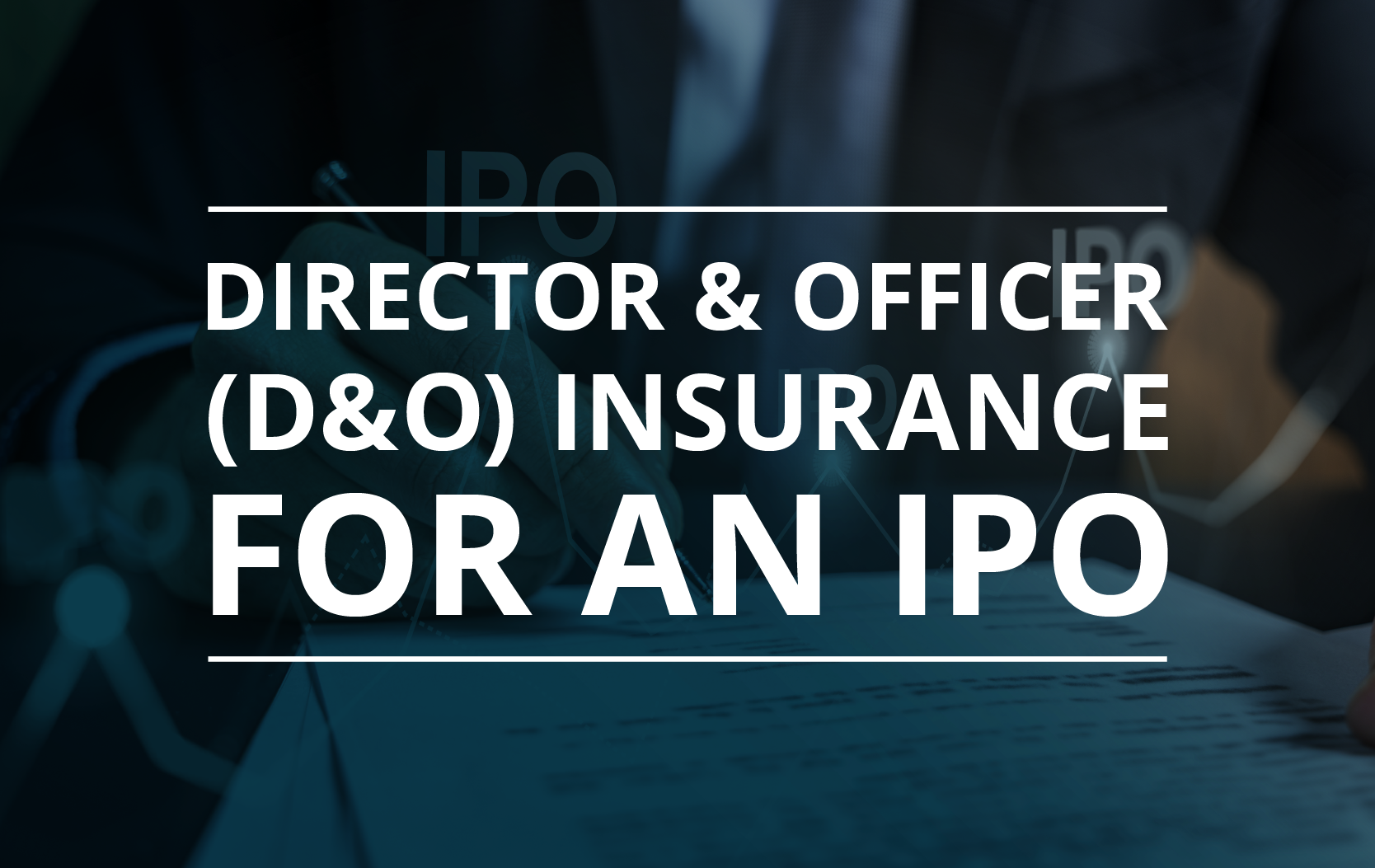Becoming a public company brings many benefits, including greater access to capital markets, additional publicity, and, of course, new cash to develop the business. However, an IPO also creates additional risks, particularly the risk of a class action lawsuit brought by investors following the IPO. One of the ways newly public companies can mitigate this risk is by securing the right liability insurance to cover directors and officers (D&O) during and after an IPO.
What is D&O Insurance?
An earnings miss, delayed product launch, underperformance of a product, inadequate disclosure, or accounting restatements can all trigger a shareholder lawsuit following an IPO. D&O insurance is designed to protect a company, board members, and executive officers from having to pay for their own defense or settlements, when they face costly lawsuits. The type of coverage offered by D&O insurance can vary depending on the policy. Details, such as claims covered (fraud, mismanagement, etc.), parties covered (issuing corporation, directors, officers, etc.), term/length, premium, and limit, are all specific to a company and policy.
Why is D&O Insurance Important?
A company will start preparing for an IPO more than a year in advance. In that time, countless hours and a great deal of effort go into fully drafting, reviewing, and vetting the S-1, roadshow presentation, public speeches, and other materials being shared with investors. Getting every t crossed and i dotted in the IPO process is important, but the risk of a shareholder lawsuit remains. D&O insurance can be designed to protect covered parties from litigation and settlement costs related to shareholder lawsuits stemming from mismanagement, incorrect information dispersed during roadshows, and other claims from shareholders.
Understated risks in the S-1 or omissions/misstatement made by management during the roadshow can lead to litigation claims post-IPO. For instance, in January 2020, SNAP agreed to a $187.5 million settlement in a lawsuit where investors claimed that the company understated the threat Instagram posed ahead of SNAP’s IPO in 2017. SNAP paid ~$100 million of the settlement out of pocket, while insurance picked up the remaining portion.
In addition, D&O insurance can also function as a recruiting and retention tool for board talent.
The Rise in Demand for D&O Insurance and Rise in Securities Litigation
2020 has been a big year for IPOs, especially when including SPACs. In the third quarter of 2020 alone, 159 companies have gone public, compared to just 62 in the same period last year. Many of these companies are trying to secure additional D&O insurance to mitigate some of the additional risks associated with the scrutiny that comes with being a public company. Demand for D&O insurance is driven by both the increase in IPOs and increase in shareholder lawsuits.
In 2019, 5% of public companies were sued, an all-time high. Today, 25% of the 2017 IPO companies have been sued. In the S-1 statement section 11 Liability, there is a 3-year statute of limitations, so plaintiffs have 3 years to bring allegations that there was a problem with the S-1. Two main types of suits that new companies need to be aware of are stock drop litigation and breach of fiduciary duty suits. Lawsuits are commonly filed against recent IPO companies when the share price falls below the offer price. As markets become volatile and the share prices of new issuances fluctuate, the probability of a shareholder lawsuit only increases.
Rising Costs of D&O Insurance
Due to the increased risk of shareholder lawsuits following an IPO, the rise in demand for D&O insurance related to IPOs, and the niche market for IPO related D&O insurance, costs have increased as insurers have become more risk averse. Notably, it is especially tough for biotech and healthcare companies to secure adequate D&O insurance, given the increased risk of litigation. In light of the rising cost of D&O insurance and importance of capital preservation leading up to an IPO, it is imperative for companies going public to consider the cost of D&O insurance and reach out to an experienced/specialized insurance broker early. When working with an insurance broker, it helps to work with your legal team on due-diligence/documentation, establish strong internal controls, have an experienced management team (especially true for SPACs), and demonstrate visibility into future earnings.
To learn more about Gilmartin and how we strategically partner with our clients, please contact our team.
Carsten Beckwith, Analyst


Leave a Reply